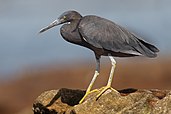From today's featured article
George Andrew Davis Jr. (December 1, 1920 – February 10, 1952) was an American fighter pilot and flying ace during World War II and the Korean War. Born in Dublin, Texas, he joined the United States Army Air Corps in 1942, and was sent to the Pacific Theater. He flew in the New Guinea and Philippines campaigns, scoring seven victories over Japanese aircraft. Known for his "daredevil" style which contrasted with his reserved personality, Davis was the only American flying ace to be killed in action in Korea. During this war, he flew the F-86 Sabre fighter jet, rising quickly to become the war's ace of aces and downing fourteen North Korean, Chinese, and Soviet aircraft. During his final combat mission, Davis surprised and attacked twelve Chinese MiG-15 fighter jets in "MiG Alley", downing two before he was shot down and killed. A major at the time of his death, he was posthumously promoted to lieutenant colonel, and received the Medal of Honor. (Full article...)
Did you know ...
- ... that "Step Chickens" on TikTok replaced their profile pictures with an image (shown) of Melissa Ong, whom they call "Mother Hen"?
- ... that interfaith greetings in Indonesia include phrases from Islam, Christianity, Hinduism, Buddhism, and Confucianism?
- ... that Absaroka was a proposed U.S. state that would have included parts of Wyoming, South Dakota, and Montana?
- ... that Kimmo Leinonen helped establish both the Finnish Hockey Hall of Fame and the IIHF Hall of Fame?
- ... that the Pulitzer Prize-winning novel All the Light We Cannot See contains a sympathetic Nazi?
- ... that prior to entering politics, Herbert Salvatierra led a troupe of carnival comparsas?
- ... that during the filming of Dawn of the Dead, hundreds of extras in zombie makeup had to be on constant standby, so the crew built a "factory" where painted extras were on-call?
- ... that Winston Churchill published an essay on extraterrestrial life during the Second World War?
In the news

- An earthquake (damage pictured) strikes Turkey and Syria, killing over 22,000 people and injuring more than 80,000 others.
- Former Pakistani president Pervez Musharraf dies at the age of 79.
- A Chinese balloon suspected of surveillance and espionage is shot down after overflying Canada and the United States.
- Comet C/2022 E3 (ZTF) makes its closest approach to the Earth.
- A suicide bombing in a mosque in Peshawar, Pakistan, kills 100 people and injures more than 220 others.
On this day
February 10: Feast day of Saint Scholastica (Christianity); National Memorial Day of the Exiles and Foibe in Italy (1947)
- 1712 – The Huilliche in Chile's Chiloé Archipelago rose up against Spanish encomenderos in revenge for perceived injustices.
- 1763 – To end the Seven Years' War, Britain, France and Spain signed the Treaty of Paris, which significantly reduced the size of the French colonial empire and marked the beginning of an extensive period of British dominance outside of Europe.
- 1906 – The Royal Navy battleship HMS Dreadnought was launched, representing such a marked advance in naval technology that her name came to be associated with an entire generation of battleships.
- 1962 – The first solo exhibition by Roy Lichtenstein (pictured) opened, including the painting Look Mickey, which featured his first use of Ben Day dots, speech balloons, and comic imagery sourcing.
- Robert Garran (b. 1867)
- Árpád Göncz (b. 1922)
- Lilly King (b. 1997)
From today's featured list
Thirty-seven species of birds have been recorded in Tuvalu, an island country in Polynesia in the Pacific Ocean. Thirteen of these species, nine of which are seabirds, breed in the country. The Pacific reef heron (example pictured), the Pacific imperial pigeon, and the buff-banded rail, along with the introduced red junglefowl, are the other breeding species. Nine species of wader, eight species of seabird, the mallard, and the long-railed koel are migratory visitors to Tuvalu. Four species of birds found in Tuvalu are globally threatened; the bristle-thighed curlew, the bar-tailed godwit and the grey-tailed tattler are near-threatened, while the Phoenix petrel is endangered. Before the arrival of humans, the birds of Tuvalu may have also included kingfishers, Acrocephalus warblers, Aplonis starlings, Prosobonia sandpipers and fruit doves. However, higher sea levels at that time might have eliminated fresh water sources on most of the atolls, making them unsuitable for pigeons or starlings. (Full list...)
Today's featured picture

|
The sebae anemone (Heteractis crispa) is a species of sea anemone belonging to the family Stichodactylidae. It is widespread throughout the tropical and subtropical waters of the Indo-Pacific, from the eastern coasts of Africa and the Red Sea to Polynesia, and from south Japan to Australia and New Caledonia. It prefers hard-base substrates slightly covered with sand but it can also cling to branching corals from the surface to a depth of 40 metres (130 ft). This sebae anemone was photographed in Ras Muhammad National Park, Egypt. A tiny Red Sea clownfish can be seen among the anemone's tentacles in the centre of the image. Photograph credit: Diego Delso
Recently featured:
|
Other areas of Wikipedia
- Community portal – The central hub for editors, with resources, links, tasks, and announcements.
- Village pump – Forum for discussions about Wikipedia itself, including policies and technical issues.
- Site news – Sources of news about Wikipedia and the broader Wikimedia movement.
- Teahouse – Ask basic questions about using or editing Wikipedia.
- Help desk – Ask questions about using or editing Wikipedia.
- Reference desk – Ask research questions about encyclopedic topics.
- Content portals – A unique way to navigate the encyclopedia.
Wikipedia's sister projects
Wikipedia is written by volunteer editors and hosted by the Wikimedia Foundation, a non-profit organization that also hosts a range of other volunteer projects:
-
Commons
Free media repository -
MediaWiki
Wiki software development -
Meta-Wiki
Wikimedia project coordination -
Wikibooks
Free textbooks and manuals -
Wikidata
Free knowledge base -
Wikinews
Free-content news -
Wikiquote
Collection of quotations -
Wikisource
Free-content library -
Wikispecies
Directory of species -
Wikiversity
Free learning tools -
Wikivoyage
Free travel guide -
Wiktionary
Dictionary and thesaurus
Wikipedia languages
This Wikipedia is written in English. Many other Wikipedias are available; some of the largest are listed below.
-
1,000,000+ articles
-
250,000+ articles
-
50,000+ articles



